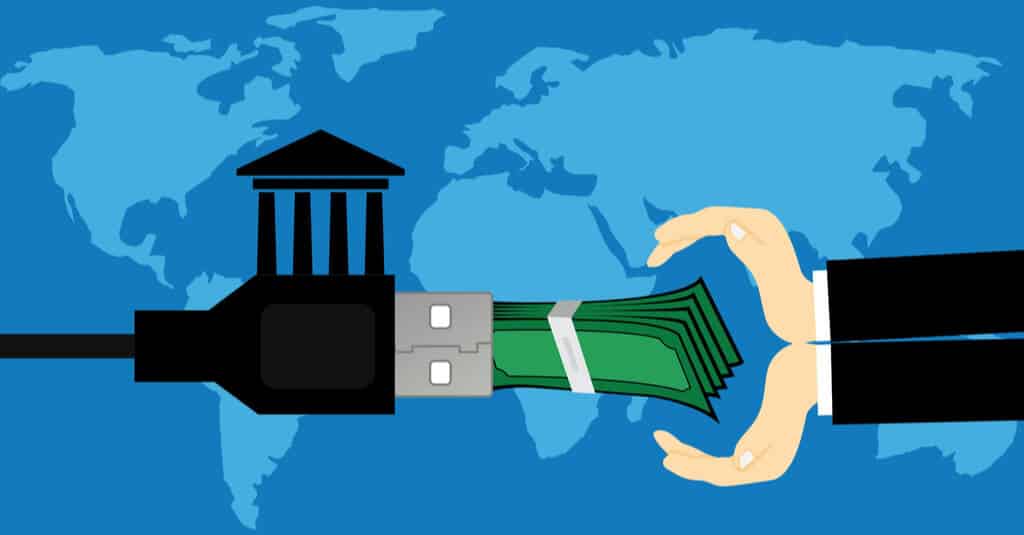Guide to Sending Money Overseas
Updated 21st January 2025 | 5 min read Published 20th February 2020

There are migrant workers all over the world who need to send money back home to their family and friends. This might be as a one-off, or it could be on a regular basis depending on individual circumstances. Learn about the various ways it’s possible to send money overseas.
How to send money overseas using PayPal
At the end of 2019 there were approximately 295 million active PayPal accounts all over the world. It’s available in more than 200 countries across Africa, Asia, Europe and the Americas, and has quickly become a mainstream way to send money across the world in a few easy steps.
Transfers into a PayPal wallet
Money can be sent to a ‘Friends & Family’ PayPal wallet, if the recipient has a PayPal account. This usually costs around $2 (USD), and will be an instant transfer. To send money via PayPal, simply register your credit/debit card to your PayPal account, pay in the relevant funds, and then it can be transferred again using just the recipient’s email address or phone number. PayPal do charge a money exchange fee for this service.
Transfers into a bank account
It’s possible for the recipient to transfer the money they have received in their PayPal wallet, into their bank account. This can take up to four days to transfer.
If the recipient does not have a PayPal account, it’s possible to transfer money straight into a bank account using Xoom – a PayPal service. After creating a Xoom account, you can enter how much money you wish to transfer overseas and pay using your PayPal account or with your debit/credit card. Money sent this way will be sent abroad for pick up, usually from an exchange center. It will be subjected to exchange rates and Xoom fees.
How to send money overseas using banks
It’s also possible to send money abroad via your bank. Either phone a helpdesk number or visit a high street branch, and a member of staff should be able to help you. All you should need to make the transfer is your International Bank Account Number (IBAN), Bank Identifier Code (BIC), and those of the recipient.
Among the main advantages of this money transfer method is the fact that your money is well protected. You can be confident that the bank will keep funds secure, and they will reach the intended recipient safely.
Disadvantages, however, include that this method rarely offers the best exchange rates. While this might not be a big issue for smaller amounts, when sending a significant sum you’re likely to notice the difference. Another negative is that international bank transfers can take up to six working days to go through, however it might be possible to pay a fee for an express service.
How to send money overseas using foreign exchange (FX) brokers
Many claim that the best option for sending a large sum of money overseas is to do so using an FX currency broker. When sending amounts over the value of around $3,900, such organizations will usually forgo the charge. Other advantages are that FX brokers usually offer the best exchange rates, money transfers happen quickly (usually the same or next day), and they will also assist with regular transfers. This means that if you need to send money once a month after pay day, an FX broker can help.
To use an FX broker to send money overseas you will need to open an account with them, which you then pay into. Bear in mind that this might take a couple of days, so allow plenty of time if you need to send money urgently. After you have paid money in to your FX account, you can arrange to have it sent on to the recipient’s bank account. It’s also important to be aware that your money is generally not as protected when using this method; it might be lost in the event that the broker closes down.
How to send money overseas using money transfer firms
Similar to PayPal, there are many other money transfer companies online and on the high street. These can be convenient because they offer a range of services, and money can be sent as cash to collect or directly into a foreign bank account. This option is usually simple and efficient, as usually you won’t need to open an account. Transfers don’t take long and will usually reach the recipient in a few days.
An important consideration with this option is the transfer firm’s charges. These can be extortionate, and in the event of sending a small amount of money, they might not be worthwhile. It’s also imperative to pay attention to exchange rates, as these can change daily. At IRIS FMP, we offer a global payment service covering 135 countries. All payments are tracked and funds arrive instantly in the majority of countries.
Sending money overseas: limits, costs, speed and other considerations
In order to determine the optimum choice for your needs, you need to consider the pros and cons of each money transfer method. Ask yourself:
- How much you need to send
- What it costs to make a transfer
- Will these transfers need to be made regularly
- How the recipient needs to receive the money
- How fast the transfer needs to be made
Some banks will usually have a limit for what can be sent abroad. This could be anything from $3,000 to $100,000 – speak to a bank adviser to find out. Many of the other methods do not have a limit however, as mentioned above; some will be more cost effective than others when sending large sums. Keep an eye on exchange rates and charges in order to determine your best option for making large transfers.
If you need more advice on sending money overseas talk to IRIS FMP, the experts in international payments. In 2019 we handled nearly a quarter of a billion pounds of global payments, £244 million, so know a thing or two about international transfers. Get in touch today.

Guide To International Payroll
"Read our ebook to understand the complexities of international payroll.




